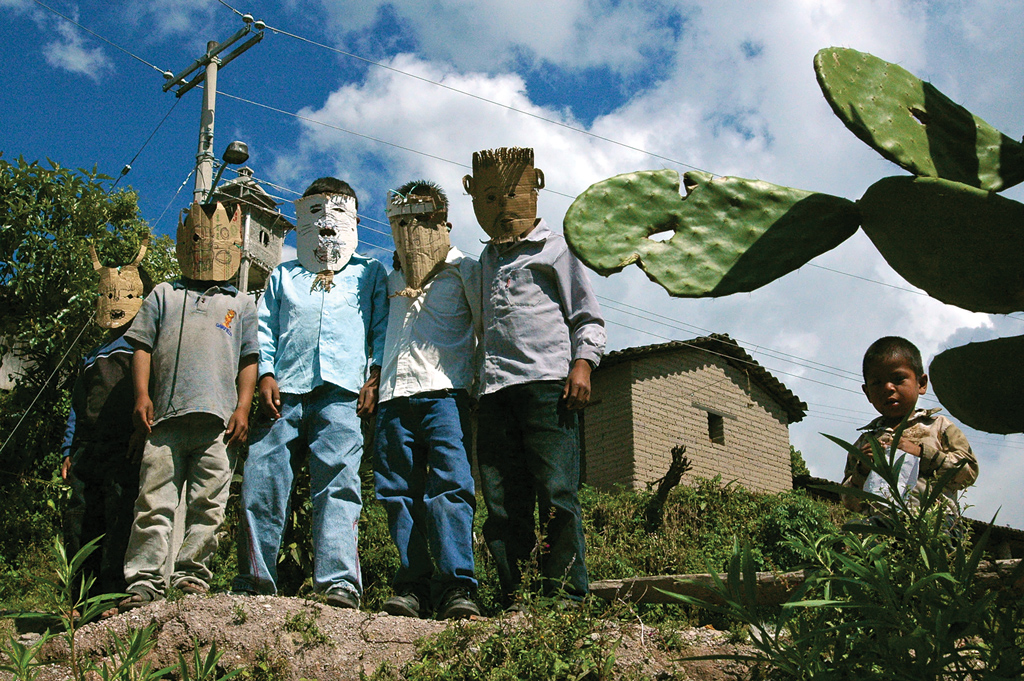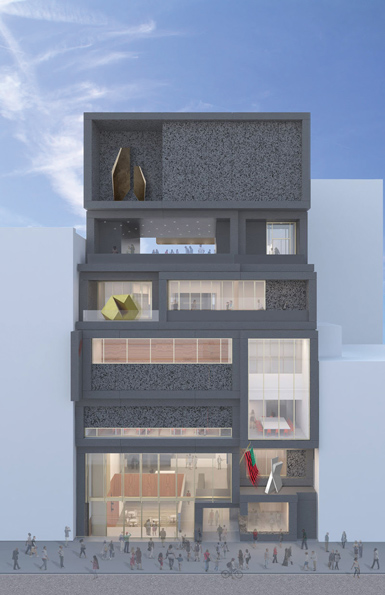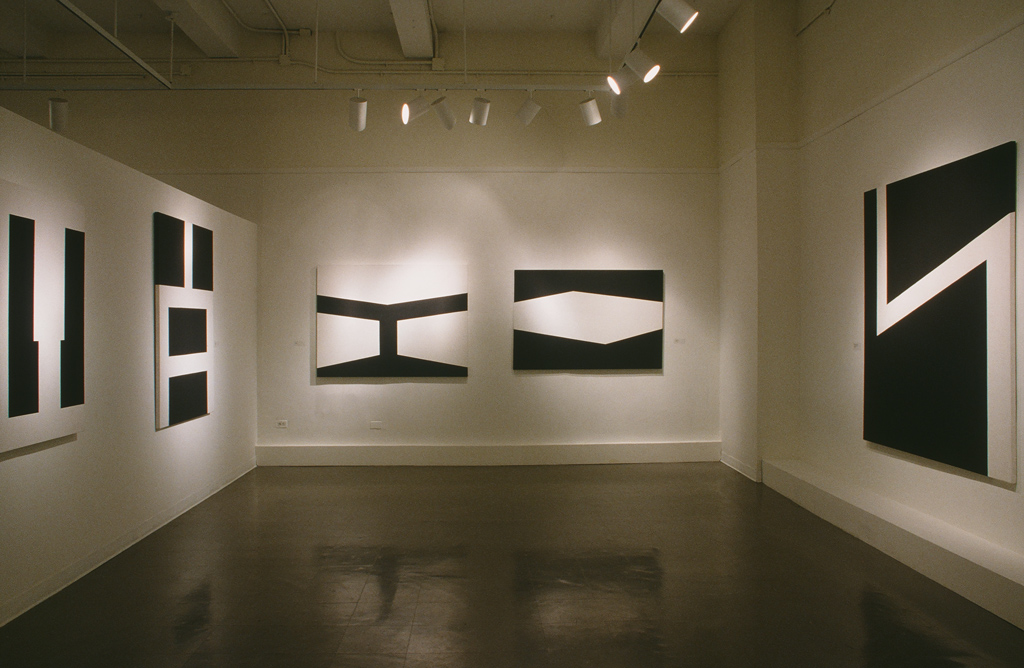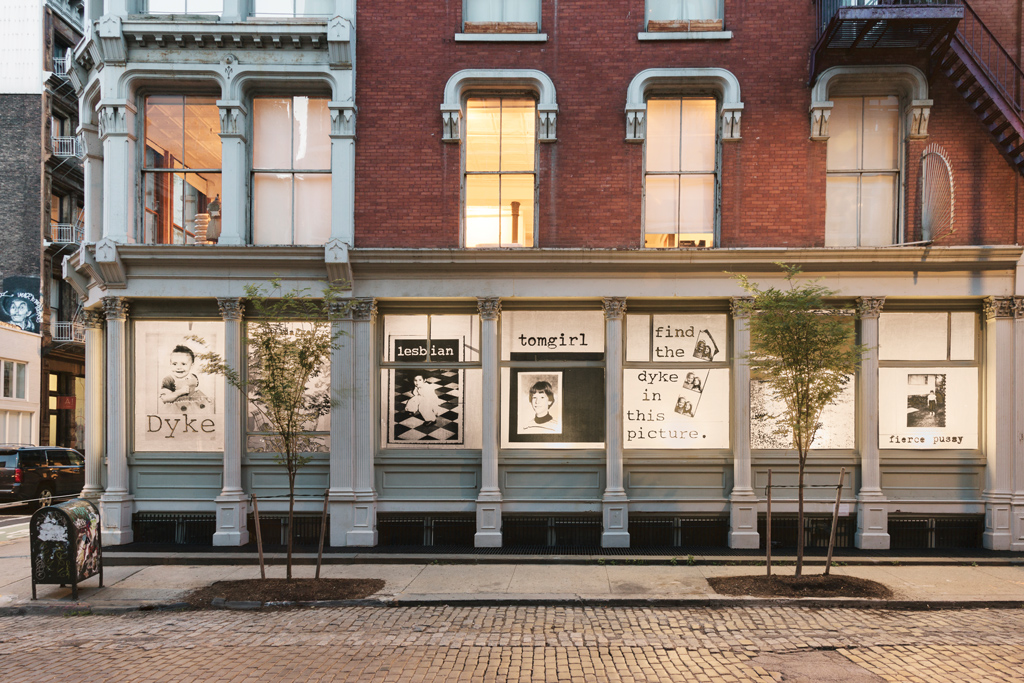[ad_1]

An image by Valentina Glockner Fagetti from the exhibition “Dreaming Up North: Children on the Move Across the Americas,” at El Museo del Barrio in 2017.
COURTESY EL MUSEO DEL BARRIO
In July, El Museo del Barrio, a museum in upper Manhattan devoted to exhibiting and collecting Latinx and Latin American art, issued a statement in response to the family separation crisis at the U.S.-Mexico border. The museum’s director, Patrick Charpenel, urged “the administration and our national leaders to take swift action to develop immigration policies that are humane and in the best interests of our children and families.” He called on followers to support organizations that are helping migrant families, and included a photograph by social anthropologist Valentina Glockner Fagetti showing a little boy next to a group of older figures wearing cardboard masks with menacing expressions. Drawn from a 2017 exhibition at El Museo titled “Dreaming Up North: Children on the Move Across the Americas,” the image was accompanied by a quote from artist and activist Tania Bruguera: “Dignity has no nationality.”
In an interview a few weeks later, Charpenel told me, “I truly believe that cultural institutions are social institutions, and the role of museums is to respond to the community and what is happening in the world. Art can change the perception about our political conditions. Museums should be aware of the roles they play—that is why we have to build platforms in relation to our own community.”
Advocacy on the part of an institution of El Museo’s size and specificity provides a partial answer to a question that has been taken up by smaller and more nimble New York museums of late: With mainstream institutions like the Metropolitan Museum of Art, the Museum of Modern Art, and the Whitney Museum diversifying to engage wider and more representative publics, what becomes the role of so-called culturally specific institutions—like El Museo, the Studio Museum in Harlem, and the Leslie-Lohman Museum of Gay and Lesbian Art—that were born out of efforts to compensate for such museums’ deficiencies?
An article in the New York Times last year about expansion plans for the Studio Museum—an institution dedicated to African-American and African diaspora art that is beginning construction this fall on a new Harlem home that will more than double its size—argued that Thelma Golden, the museum’s director, “must defend the Studio Museum’s importance in an age when the work of African-American artists is increasingly making its way into mainstream institutions.” In response, Golden told the Times, “I take seriously the responsibility to represent what it means to believe in the power and the possibility of diversity and inclusion in our cultural world.” About her directorship at the Studio Museum in particular, she added, “It feels like this is what I am supposed to be doing.”
Golden told me this past summer that the same sense of purpose continues. “We see ourselves as part of a national and global ecosystem of museums and arts organizations,” Golden said. “We stand for something.”
Defending stances of the kind has not always been easy. “The moment I entered the field, this was the question people were always asking, ‘Are places like the Studio Museum and El Museo still relevant?’,” said Sandra Jackson-Dumont, who worked at the Studio Museum from 2000 to 2006 and now serves as the chair of education at the Metropolitan Museum of Art. “What’s fascinating to me is, no one’s asking that about the New Museum or other museums founded around the same time. I think less about whether or not they’re still relevant, but what are the ways in which they are?”
The Studio Museum opened in 1968 through a joint venture between artists and community organizers in Harlem and members of MoMA’s Junior Council. As detailed in Susan E. Cahan’s 2016 book, Mounting Frustration: The Art Museum in the Age of Black Power, the small enterprise—under its second director, artist and poet Edward Spriggs—took up the position of activists who urged black artists to build their own institutions independent of whites. During the tenure of director Mary Schmidt Campbell, from 1977 to 1987, the museum moved out of its location in a loft into its current home on West 125th Street, and began to produce catalogues regularly for its exhibitions.
The museum underwent another significant shift after Golden took over in 2005 and expanded its focus to artists and audiences with a more global reach. In 2008 she oversaw the exhibition “Flow,” which presented the work of 20 artists from the African diaspora. “We wanted to embrace the full realm of artwork being made by black artists in the world today,” Golden told National Public Radio at the time.

An architectural rendering of the Studio Museum in Harlem’s future space designed by David Adjaye, which is slated to open in 2021.
COURTESY ADJAYE ASSOCIATES
Slated to open in 2021, the Studio Museum’s future five-story, David Adjaye–designed home will accommodate an audience that has expanded. Between 2014 and 2017, according to figures the museum provided to the Art Newspaper, visitorship nearly doubled, with attendance in 2017 reaching 113,000. “The biggest change since our founding is that our audience has grown,” Golden told me. “Part of that is through the increased visibility of artists of African descent, which I am proud that we had a part in.”
In the decades since the Studio Museum opened—and particularly in the past five years—artists of color have gained traction both institutionally and in the market. A demonstration of that came this past May, when Sotheby’s held a two-day charity auction benefiting the Studio Museum, with works donated by 42 artists, many of whom had received support from the institution early in their careers. The sale was a rousing success, bringing in $20.2 million and prompting a round of applause in the Sotheby’s salesroom. An unrelated Sotheby’s auction that same evening included a painting by Kerry James Marshall, another artist who benefited from early Studio Museum support. With much fanfare, that work—which featured in the New York showing of Marshall’s critically lauded traveling retrospective in 2016 at that most vaunted of mainstream institutions, the Met—went to the musician, record producer, and businessman Sean Combs for a record $21.1 million.
In the introduction to the charity auction’s catalogue, Studio Museum board chair Raymond J. McGuire wrote, “The Studio Museum has redressed the under- and mis-represented work of black artists, scholars, museum professionals, and collectors, giving rise to an inclusive and generative ecology of creativity and cultural expression. Some would argue that our work is done. . . . But, in fact our work is just beginning.”
When I spoke with him in July, McGuire called the current moment an inflection point. “It’s not ‘and/or,’ ” he said of any perceived competition between culturally specific museums and larger institutions. “I see it as ‘but/for.’ ” Drawing a cause-and-effect connection back to his institution’s beginnings, he continued, “but for the Studio Museum’s existence over the past 50 years, mainstream museums would have completely ignored [this work], because there was nobody within their confines who had a deep appreciation of what’s taking place. There’s a direct correlation.”
The Studio Museum hasn’t only nurtured artists. In her 18 years at the helm (after joining as deputy director in 2000), Golden has developed “an incubator of curatorial talent,” according to Whitney Museum chief curator Scott Rothkopf. “You can look all over America and see Studio Museum alums doing incredible work,” he said. Among those who have been curators under Golden and later taken jobs at larger institutions are Christine Y. Kim (now at the Los Angeles County Museum of Art), Naomi Beckwith (Museum of Contemporary Art Chicago), Thomas J. Lax (MoMA), Jamillah James (Institute of Contemporary Art, Los Angeles), Lauren Haynes (Crystal Bridges Museum of American Art in Arkansas), Rujeko Hockley (Whitney Museum), and Amanda Hunt (Museum of Contemporary Art, Los Angeles).
Rothkopf has pushed for diversity in one of New York’s biggest mainstream institutions since he became chief curator at the Whitney in 2015. Among his notable moves has been presenting rehangs of the museum’s collection to expand the notion of what American art comprises with shows such as “Where We Are” and “An Incomplete History of Protest.” He has also helped bring in acquisitions of African-American artists like Faith Ringgold, Melvin Edwards, Rashid Johnson, and Dread Scott, and he spearheaded the hiring of Hockley and Marcela Guerrero, a specialist in Latinx art. Rothkopf said he has benefited from work done by Golden and others that has directly informed the Whitney’s curatorial direction.
“When you talk about a culturally specific museum, you need to look at both the artists presented [and] the audiences served,” he said, pointing to such institutions’ long-term educational and artist residency programs. “That’s something the Whitney can’t replace when we show a black artist. I don’t see the expansion of a major museum’s programming into areas of [culturally specific museums’] expertise as taking anything away from them. If anything, it makes them an even more vital institution in relation to the communities they serve.”
Suggesting that more venues can be for the good of all, Rothkopf continued, “there are always going to be more artists deserving of exhibitions than places like the Whitney, the Met, or MoMA can show. I don’t want to think of this as a competitive situation but hopefully one in which everyone doing great work will benefit the field.” And it’s important, he added, that museums like the Whitney respect the role these institutions play in widening the breadth of art and artists all around. “I think we absolutely, as larger institutions that are interested in these areas, have a real ethical responsibility not to exploit what they do or co-opt their missions,” he said. “We need to honor those histories and the expertise that they bring.”

Installation view of “FOCOS: Carmen Herrera: The Black Paintings, 1951–1989,” 1998, at El Museo del Barrio.
©KARL PETERSON, EL MUSEO DEL BARRIO
El Museo del Barrio was founded in 1969, in New York’s historically Puerto Rican East Harlem neighborhood, by Puerto Rican artists, activists, and educators looking to educate their community about the art and culture of the Island. “It was really to recover these identities that were invisible in U.S. life,” said Susana Torruella Leval, who served as director at El Museo from 1994 to 2002. “Cultural recovery was important to these institutions, and, in some senses, because of the racism in this country, it was also cultural resistance.”
Leval rejects the notion put forth by certain detractors—from both within and outside the particular culturally specific communities served—that such institutions might ghettoize artists. “It’s very interesting no one thinks to call the Yale Center for British Art or the French Cultural Institute a minority place,” she said. “Why doesn’t anybody call that a ghetto? It’s just a racist way of talking. I used to get accusations all the time that we were ghettoizing artists. We were showing people of a like ethnicity who wanted to identify that way.”
It was in the ’90s that institutions like El Museo and the Studio Museum earned the moniker “culturally specific,” in the aftermath of exhibitions like “The Decade Show” (1990), co-organized by the Studio Museum, and the famously political 1993 Whitney Biennial, which Golden worked on while she was at that institution. At the height of the era’s multiculturalism, artist Tony Bechara, who joined El Museo’s board in 1991 and is now chair emeritus, began thinking about what the museum’s future might entail when mainstream museums started exhibiting artists that El Museo supported. “I feared it at the beginning, looking ahead strategically,” he told me. “If they come in to fill that void, we’re going to be in trouble.” However much that might have come to pass, Bechara said, mainstream museums will always benefit from the presence of smaller institutions like El Museo. “The population is so large that those museums cannot really satisfy the whole spectrum,” he said. “There certainly is room.”
Under Charpenel, who became El Museo’s director last year, the institution is seeking stability, both financial and programmatic, after nearly a decade of rocky staff transitions and financial hardships that almost resulted in its closure. The museum’s attendance figures over the past few years reflect these changes: From the fiscal year 2013 to 2015, visits hovered between 75,000 and 88,000 before jumping to 113,000 in 2016—and then, last year, falling to around 65,000.
With Charpenel in place, the museum has plans to focus on creating a rigorous program of scholarship on Latinx and Latin American art “to make known the rich history of Latinos in this country,” the director said. “We will be careful not to idolize our histories and cultures but instead to talk about the tensions, contradictions, paradoxes, and complexities that are related to our cultural identities.
“For me, a museum is not a platform to legitimize history and culture,” he continued, “but to problematize.”
Like the Studio Museum, El Museo has seen artists it has shown go on to projects at larger institutions, among them Carmen Herrera, who had a solo exhibition at El Museo in 1998 and a show at the Whitney in 2016. Miguel Luciano, who has exhibited at El Museo and whose work is in its collection, recently started a Civic Practice Partnership residency at the Met, which supports artists with long-standing ties and commitment to working in specific neighborhoods in New York.
“I don’t feel that this is happening at the expense of other institutions,” Luciano said of an effort that might once have been undertaken only by a place like El Museo. “The Met is doing a better job right now at what they should always have been doing—and what every institution should be doing—in terms of increasing connections to communities that they’re not connected to or that don’t always feel welcome, represented, or included in the museum world.”

Installation view of “fierce pussy: And So Are You,” at Leslie-Lohman Museum, on view through June 2019.
©2018 KRISTINE EUDEY
As work by non-white artists becomes more visible in larger institutions, it can sometimes lack context and miss certain subtleties of the communities to which such artists belong. “It’s about being able to be nuanced,” Bechara, of El Museo, said of the importance of understanding cultural particularities. “It’s not enough just to have shows of Latin Americans. There is nuance that is being missed: levels and layers of contributions, artistic thinking, and philosophy that happens within each of those communities.”
Naima J. Keith, deputy director and chief curator of the California African American Museum and another Studio Museum alum (she was associate curator from 2011 to 2016), pointed to a recent exhibition she curated at CAAM featuring the artist Nicole Miller. The museum presented Miller’s 2016 three-channel video installation Athens, California, which documents an unincorporated neighborhood in Los Angeles County that is predominantly black and Latinx and has often been denigrated as dangerous. The artist, Keith said, “felt that CAAM was the best place for it because she realized that the people she wants to see the film are more likely to come to CAAM than other institutions. She felt that the home for it was here, that CAAM could provide a context that maybe other institutions couldn’t.”
The Leslie-Lohman Museum of Gay and Lesbian Art in SoHo is looking to provide this kind of context and depth of perspective for queer artists. Rather than employ a chief curator on staff, the museum, under director Gonzalo Casals, who started in March 2017, has brought in guest curators in order to present different points of view. “I could certainly take my board and my staff out on a retreat for a weekend, come back with a definition of ‘queerness,’ and then do that,” Casals said. “To me, it’s more important that this museum is a place for constant exploration and evolution. That opens up the possibilities of what can happen.”
Leslie-Lohman is only now maturing as an institution. It began as an exhibition space in a SoHo loft for art by gay men in 1969, just weeks before the Stonewall Uprising. In the 1980s and ’90s it shifted its focus to preserving artworks by queer artists who were dying from AIDS-related causes; after they died, their work was often discarded by intolerant family members because of its gay content.
The Leslie-Lohman founders established the institution, first located on Prince Street, as a foundation in 1987, but didn’t receive tax-exempt status until 1990 because of what they maintain was apprehension on the part of the Internal Revenue Service over the word “gay” in its title. The foundation moved to its current location on Grand and Wooster Streets in 2006, and in 2011, the New York State Board of Regents granted a provisional charter to become a museum, which it did officially in 2016.
Early last year, the museum reopened after a renovation, and since 2013, attendance figures have slowly climbed from around 14,000 to just over 20,000 in 2017 (even withstanding the two months it was closed for refurbishing). For years, the Leslie-Lohman had focused on work by cis, gay white male artists, most of it erotic. (One artist I spoke with called it “the museum of penises.”) But since reopening in 2017, the museum has sought to diversify its holdings and programming with contributions from the broader LGBTQ+ community. Last year, the museum presented its first retrospective of a lesbian artist, the experimental filmmaker Barbara Hammer. Casals is creating fellowships and workshops for queer artists and writers, drafting curricula for schools to talk about queer issues and art, and reclaiming scholarship from a queer perspective.
Artist Buzz Slutzky, who is non-binary, said that in mainstream spaces there is often an expectation to perform identity. “I’ve had cisgender curators approach me and say things like, ‘Do you have an artwork about being trans that relates to my curatorial idea?’,” Slutzky said. “It’s clear they’re looking for work about the idea of a trans body, and that’s not always what I want my work to be. It’s nice to just be like, ‘I’m a queer person and I’m making work.’ ”
By any measure, there is more work to be done in museums in terms of hiring more diverse curators and administrators. In summer 2017, New York City Mayor Bill de Blasio introduced a “cultural plan” that includes stipulations linking public support for museums to the diversity of their staffs and boards, a consideration the mayor said would be “a factor in funding decisions by the city going forward.”
At a Ford Foundation symposium this past summer at SITE Santa Fe, Rocío Aranda-Alvarado, a former El Museo curator who is now a Ford program officer, presented tallies of curators at nationwide mainstream museums whose appointments relate specifically to art of the kind that El Museo or the Studio Museum would present: 16 for African-American art, 10 for Latin American Art, and 3 for Latinx art. She also pointed to a 2015 Mellon Foundation study finding that 84 percent of museum curators, conservators, educators, and leadership are white, even as 38 percent of Americans identify as people of color. A 2017 study from the City University of New York’s Guttman Community College found that 80.5 percent of all artists represented by the top 45 galleries for the 2016–17 season in New York were white.
“While museums are certainly diversifying their programs, I think we all know there’s a lot of work to be done,” Jackson-Dumont, of the Met, said. “It’s important to remind people that we’re not there. The pitch has evolved, but don’t let all this news attention fool you into thinking that the imbalance has been eradicated.”
Even if balance can be found, there would still be a need for these culturally specific museums. “We can’t erase our history,” said the artist collective fierce pussy, which recently installed a major commission wrapping the windows of the Leslie-Lohman until next year. If not for racism, misogyny, homophobia, and other forms of oppression, perhaps such institutions wouldn’t have been needed, the collective said—“but we have needed them.”
Culturally specific museums are uniquely positioned in the current discussions of equity in the art world, said Deborah Cullen, the recently appointed director of the Bronx Museum of the Arts, who worked in various curatorial roles at El Museo for 15 years. “With the interest that has been paid to the conversation around diversifying our institutions, it would seem like these institutions are vital places to lead this conversation,” she said. “They’re the ones with the history of doing this in an ongoing way. This isn’t a fad for them. This is something they know how to do.”
They also know how to engage the evolving nature of race and identity. “These institutions are discursive spaces where issues of identity are still being contested,” said Yasmin Ramírez, a former curator and board member of El Museo. “They reinforce the idea that identities are unstable. The most vanguard of them are constantly throwing that question up for grabs, and that’s good for us as a society—and good for art because the best art is born out of discourse and opposition.”
A version of this story originally appeared in the Fall 2018 issue of ARTnews on page 112 under the title “Mission Accomplished?”.
[ad_2]
Source link

